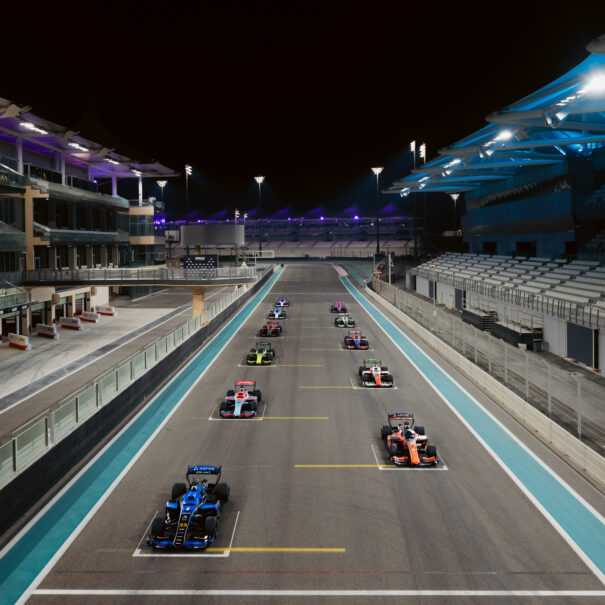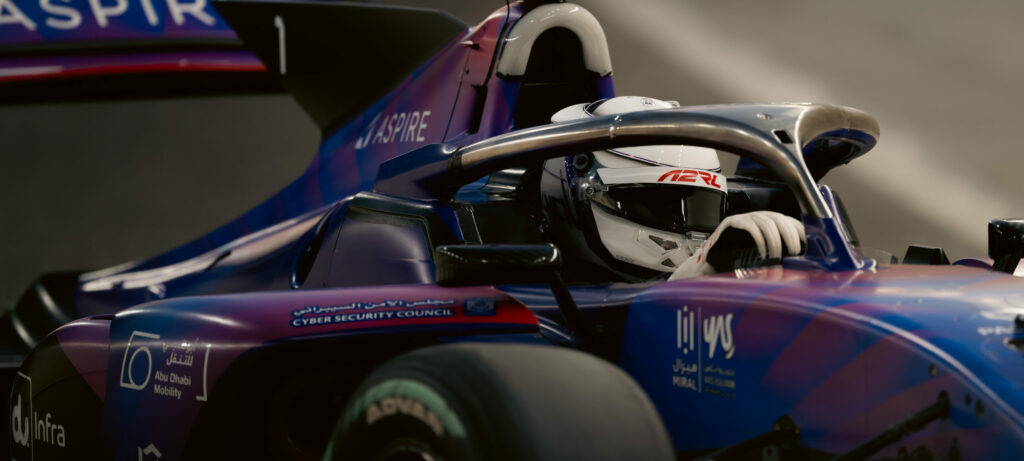Abu Dhabi Autonomous Racing League: 2025 season recap
The second edition of the Abu Dhabi Autonomous Racing League (A2RL) concluded on November 15 with a spectacular Grand Final, hosted during the inaugural Abu Dhabi Autonomous Week (ADAW).
Eleven international teams competed for a total prize purse of USD 2.25 million, with only the six fastest advancing to the Grand Final, marking the first time that six fully autonomous racecars competed head-to-head over 20 laps.
With more than 8,000 spectators in attendance, A2RL 2025 reaffirmed its ability to blend entertainment, competition, and high-end technological progress, consolidating its position as a genuine open-air laboratory for autonomous-driving innovation.
By exposing AI systems to the extreme conditions of motorsport, the competition accelerates the development of autonomous-driving technologies in ways that conventional testing environments cannot replicate.

The Grand Final: a defining moment
The Gold Race saw TUM starting from pole position and immediately challenged by Unimore, which overtook as early as the second lap. For over ten laps, the two cars ran within a one-second margin, exceeding speeds of 250 km/h in a tightly contested battle.
A collision between Unimore and Constructor handed the lead back to TUM, which ultimately crossed the finish line in first place, securing back-to-back victories after last year’s win.
Unimore, despite retiring, earned the award for the fastest lap with a 58.87-second time.
Race results
Gold Race:
- TUM
- TII Racing
- PoliMOVE
- Kinetiz
- Unimore (DNF)
- Constructor (DNF)
Silver Race, a time-attack event on the North layout of the Yas Marina Circuit, saw the remaining teams compete for ranking:
- TGM GP
- FlyEagle
- Code19
- Rapson
- FR4IAV
AI vs. Human: the Daniil Kvyat challenge
Former F1 driver Daniil Kvyat challenged HAILEY, TUM’s autonomous racecar, starting with a 10-second advantage. After two warm-up laps, Kvyat set a best time of 57.57 seconds, while HAILEY responded with a 59.15-second lap, reducing the final gap to just 1.58 seconds, a remarkable progression considering the 10-second gap recorded in the previous race.
This head-to-head highlighted how quickly AI systems are converging toward professional-driver performance, particularly in tire management and grip optimization compared to earlier seasons.

A2RL 2025: a season of evolution in autonomous racing
For A2RL Season 2, the EAV-24 platform was upgraded to create the EAV-25. Still based on the Japanese Super Formula chassis, the new autonomous racecar reaches top speeds of 295 km/h and features significant hardware and software enhancements across safety, reliability, and the powertrain, enabling more precise vehicle control and more advanced autonomous racing performance.
In only 18 months, the championship has progressed from static prototypes to autonomous vehicles capable of challenging human drivers: a dramatic leap forward in machine-learning applications for high-performance vehicle dynamics.
The qualifying sessions and sprint races had already revealed a clear rise in team maturity, a trend that the Grand Final further confirmed. Planning algorithms and maneuver-execution strategies showed notable refinement: TUM’s decisive overtake on Unimore demonstrated the ability to execute aggressive yet controlled race strategies, while Unimore’s performance in sprint races highlighted a strong balance between pace and algorithmic robustness.
The collision involving Unimore and Constructor also underscored one of the remaining challenges for autonomous systems: managing unpredictable events. At the same time, it is worth noting that even a human driver, especially at these speeds, would struggle to avoid an impact if a car suddenly slows or stops ahead with limited visibility, as reaction times alone may not be sufficient. TUM handled the scenario effectively, relying on a resilient control algorithm during Full Course Yellow phases and subsequent restarts.
The role of the technologies provided by Meccanica 42
Meccanica 42 supported the competition by supplying advanced steering (PSA) and braking (CBA) actuators, as well as the mid-level control unit (BSU). All components were updated to enhance operability, simplify maintenance, reduce total mass, and minimize post-crash damage, meeting the new development requirements.
From a technical perspective, the Meccanica 42 team is satisfied with how quickly the Season 2 actuators achieved the robustness and consistency required for competitive racing.
Operational efficiency also advanced significantly over last season: faster skid swaps, pre-validated software, and actuators that performed flawlessly with no mechanical or control-related issues. This reliability enabled teams to concentrate on strategy and high-level development rather than relying on continuous technical assistance.

Component upgrades introduced for A2RL season 2
Several upgrades were introduced to Meccanica 42’s architecture across three main areas:
- Safety: fully hydraulic braking for enhanced on-track operations
- CBAs now manage all braking, performing speed-modulated emergency braking and replacing the previous pneumatic backup.
- A dual 48V/12V power supply ensures safe stops in the event of electrical faults.
- The BSU introduces a Limp Mode to allow cars to return safely to the pits during failures.
- Performance: lower mass for improved dynamics and control
- Passive brake circuits were removed and CBA hydraulics streamlined for a lighter, more compact system.
- Reduced mass lowers the center of gravity and inertia, improving balance and responsiveness.
- Operability: more reliable, maintenance-friendly systems
- Redesigned wiring looms provide faster access and simplified maintenance.
- Removal of the pneumatic system streamlines startup and shutdown procedures.
- A PSA torque limiter with slip joint protects components during minor impacts and ensures continued operation.
- An upgraded HMI delivers real-time diagnostics, enabling faster reaction from the teams.
Equally noteworthy is the progress demonstrated by the leading teams, who successfully unlocked the full capabilities of the platform, from implementing left–right independent braking on the CBA to increase stability, to leveraging the PSA’s high-torque counter-steering, an impressive achievement given the lightweight nature of the racecar.
A2RL as a testbed for the future of automotive technology
A2RL continues to establish itself as a vital testbed for future autonomous racing and automotive technologies.
Handling race-level chaos (crashes, outliers, restarts) gives engineers the opportunity to validate algorithms and hardware under extreme conditions before transferring them to Level-5 road-vehicle development. The robustness gained on a controlled racetrack forms the basis for tackling the far more complex challenges of real-world environments.
A2RL 2025 marked a significant step forward: AI systems nearing professional-driver performance, more mature race-strategy execution, highly reliable technology, and increasingly efficient team organization. The competition reinforces its value as a development platform for the automotive industry, demonstrating how the combination of advanced technology and human expertise can accelerate the evolution of autonomous-driving systems.
With attention already shifting toward the 2026 season, new challenges and innovations are expected, both on the racetrack and across the wider landscape of real-world mobility applications.
For more information about our innovative solutions and how they can streamline your vehicle’s functions development, please contact us.
Don’t forget to follow us on LinkedIn, Instagram, and to subscribe to our newsletter to stay in the loop!
